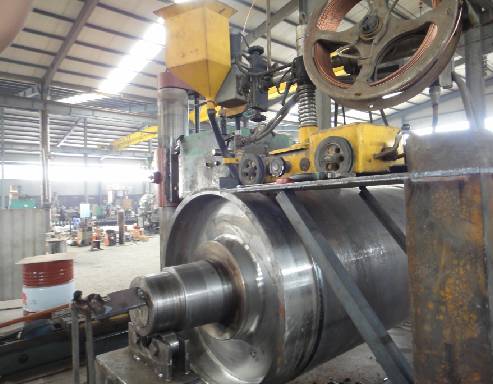 Afrikaans
Afrikaans  Albanian
Albanian  Amharic
Amharic  Arabic
Arabic  Armenian
Armenian  Azerbaijani
Azerbaijani  Basque
Basque  Belarusian
Belarusian  Bengali
Bengali  Bosnian
Bosnian  Bulgarian
Bulgarian  Catalan
Catalan  Cebuano
Cebuano  Corsican
Corsican  Croatian
Croatian  Czech
Czech  Danish
Danish  Dutch
Dutch  English
English  Esperanto
Esperanto  Estonian
Estonian  Finnish
Finnish  French
French  Frisian
Frisian  Galician
Galician  Georgian
Georgian  German
German  Greek
Greek  Gujarati
Gujarati  Haitian Creole
Haitian Creole  hausa
hausa  hawaiian
hawaiian  Hebrew
Hebrew  Hindi
Hindi  Miao
Miao  Hungarian
Hungarian  Icelandic
Icelandic  igbo
igbo  Indonesian
Indonesian  irish
irish  Italian
Italian  Japanese
Japanese  Javanese
Javanese  Kannada
Kannada  kazakh
kazakh  Khmer
Khmer  Rwandese
Rwandese  Korean
Korean  Kurdish
Kurdish  Kyrgyz
Kyrgyz  Lao
Lao  Latin
Latin  Latvian
Latvian  Lithuanian
Lithuanian  Luxembourgish
Luxembourgish  Macedonian
Macedonian  Malgashi
Malgashi  Malay
Malay  Malayalam
Malayalam  Maltese
Maltese  Maori
Maori  Marathi
Marathi  Mongolian
Mongolian  Myanmar
Myanmar  Nepali
Nepali  Norwegian
Norwegian  Norwegian
Norwegian  Occitan
Occitan  Pashto
Pashto  Persian
Persian  Polish
Polish  Portuguese
Portuguese  Punjabi
Punjabi  Romanian
Romanian  Russian
Russian  Samoan
Samoan  Scottish Gaelic
Scottish Gaelic  Serbian
Serbian  Sesotho
Sesotho  Shona
Shona  Sindhi
Sindhi  Sinhala
Sinhala  Slovak
Slovak  Slovenian
Slovenian  Somali
Somali  Spanish
Spanish  Sundanese
Sundanese  Swahili
Swahili  Swedish
Swedish  Tagalog
Tagalog  Tajik
Tajik  Tamil
Tamil  Tatar
Tatar  Telugu
Telugu  Thai
Thai  Turkish
Turkish  Turkmen
Turkmen  Ukrainian
Ukrainian  Urdu
Urdu  Uighur
Uighur  Uzbek
Uzbek  Vietnamese
Vietnamese  Welsh
Welsh  Bantu
Bantu  Yiddish
Yiddish  Yoruba
Yoruba  Zulu
Zulu accessory belt idler pulley
Understanding Accessory Belt Idler Pulleys Function, Importance, and Maintenance
The accessory belt idler pulley is a crucial component in a vehicle's engine system, often overlooked until it presents a problem. This small yet vital piece plays an essential role in maintaining the efficiency and functionality of various engine accessories, including the alternator, power steering pump, and air conditioning compressor.
Function of the Accessory Belt Idler Pulley
The primary function of the accessory belt idler pulley is to guide and maintain tension on the serpentine belt, which is responsible for transferring power from the engine to various components. The idler pulley helps ensure that the belt runs smoothly and efficiently, minimizing wear and tear. By providing a consistent tension, it prevents slippage, which can lead to reduced performance of attached accessories.
In a typical vehicle engine, the serpentine belt winds around several pulleys, including those belonging to the water pump, alternator, and others. The idler pulley can adjust the belt's tension and alignment, ensuring that all components receive the necessary power. Without the idler pulley, the belt could become loose or misaligned, leading to inefficient operation and increased energy consumption.
Importance of Maintenance
Regular maintenance of the accessory belt idler pulley is crucial for the overall performance of a vehicle. Over time, the pulley and the serpentine belt can wear out due to constant friction and exposure to environmental elements. A failing idler pulley may exhibit signs such as unusual noises (a growling or grinding sound), belt slippage, or visible wear on the belt itself.
accessory belt idler pulley

If an idler pulley fails, it can lead to serious consequences, including overheating of the engine or complete breakdown of accessory functions. In some cases, a malfunctioning pulley can result in the serpentine belt breaking, which could cause the engine to stall or, in the worst-case scenario, incur damage to the engine's components.
Signs of a Failing Idler Pulley
Vehicle owners should be vigilant and listen for any unusual noises coming from the engine compartment. A squeaking or chirping sound could indicate a worn-out idler pulley or serpentine belt. Additionally, if the power steering feels sluggish, or if the engine warning light appears on the dashboard, it may be time to inspect the idler pulley and related components.
Visual inspections can also help identify issues; any cracks, chips, or debris around the pulley should be addressed promptly. Regularly scheduled maintenance checks can help catch these problems early, ultimately saving car owners from expensive repairs.
Conclusion
In summary, the accessory belt idler pulley may seem like a minor component of a vehicle, but its function and importance cannot be overstated. Properly maintaining this pulley and the related serpentine belt will ensure optimal performance of essential engine accessories, contributing to overall vehicle reliability. Regular inspections and timely replacements can prevent costly repairs and enhance the longevity of the vehicle. As with all automotive components, being proactive in maintenance will lead to a smoother and safer driving experience.
-
Revolutionizing Conveyor Reliability with Advanced Rubber Lagging PulleysNewsJul.22,2025
-
Powering Precision and Durability with Expert Manufacturers of Conveyor ComponentsNewsJul.22,2025
-
Optimizing Conveyor Systems with Advanced Conveyor AccessoriesNewsJul.22,2025
-
Maximize Conveyor Efficiency with Quality Conveyor Idler PulleysNewsJul.22,2025
-
Future-Proof Your Conveyor System with High-Performance Polyurethane RollerNewsJul.22,2025
-
Driving Efficiency Forward with Quality Idlers and RollersNewsJul.22,2025





























